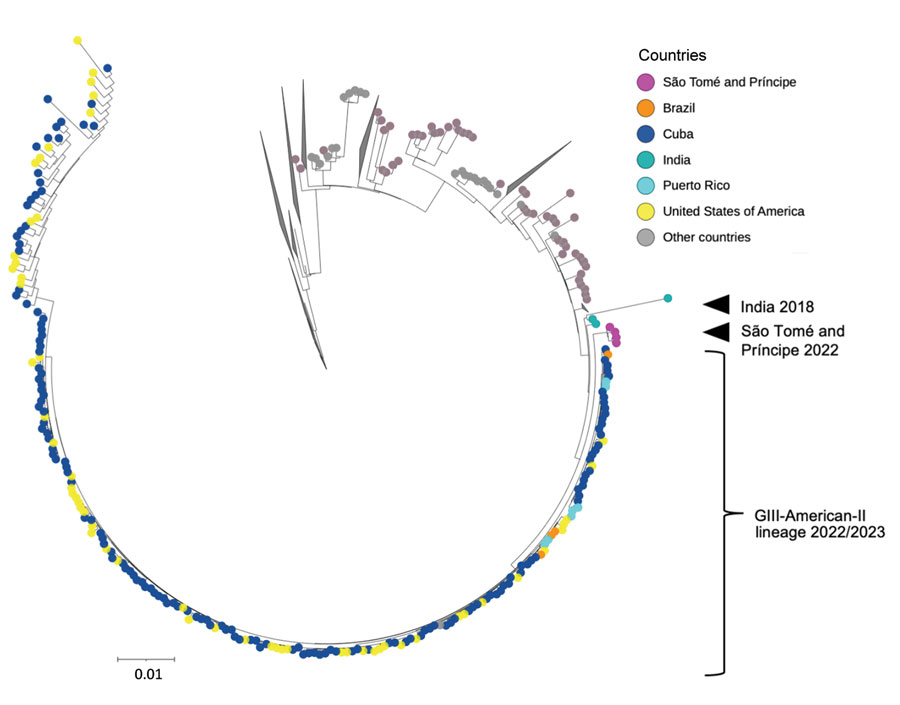Volume 30, Number 2—February 2024
Research Letter
Phylogenomics of Dengue Virus Isolates Causing Dengue Outbreak, São Tomé and Príncipe, 2022
Figure

Figure. Reconstructed consensus tree of newly sequenced dengue virus serotype 3 isolates from São Tomé and Príncipe. The isolates clustered with and are closely related to a new monophyletic clade consisting of 218 dengue virus serotype 3 sequences detected in the Americas during 2022–2023. To improve visualization, several clades have been collapsed. Scale bar indicates nucleotide substitutions per site.
Page created: November 30, 2023
Page updated: January 24, 2024
Page reviewed: January 24, 2024
The conclusions, findings, and opinions expressed by authors contributing to this journal do not necessarily reflect the official position of the U.S. Department of Health and Human Services, the Public Health Service, the Centers for Disease Control and Prevention, or the authors' affiliated institutions. Use of trade names is for identification only and does not imply endorsement by any of the groups named above.